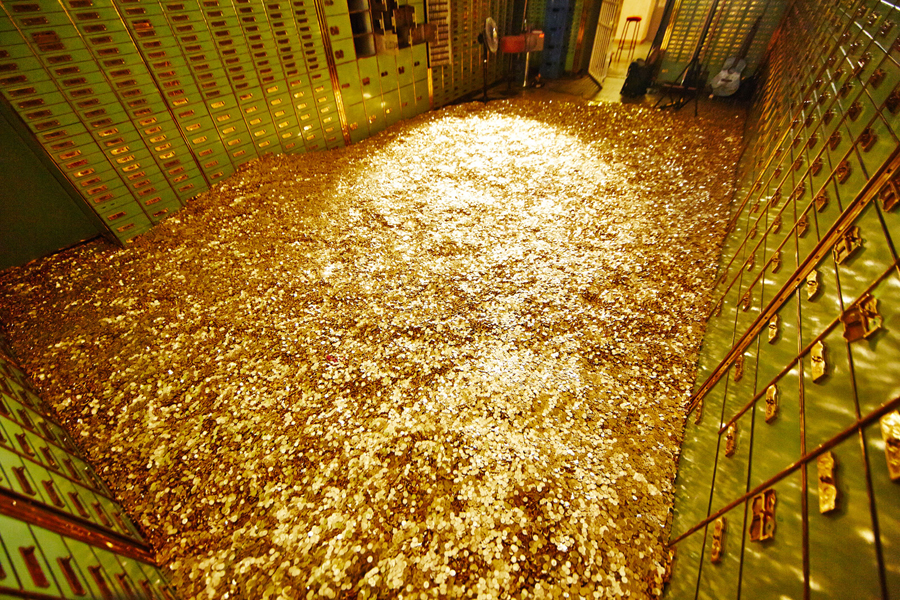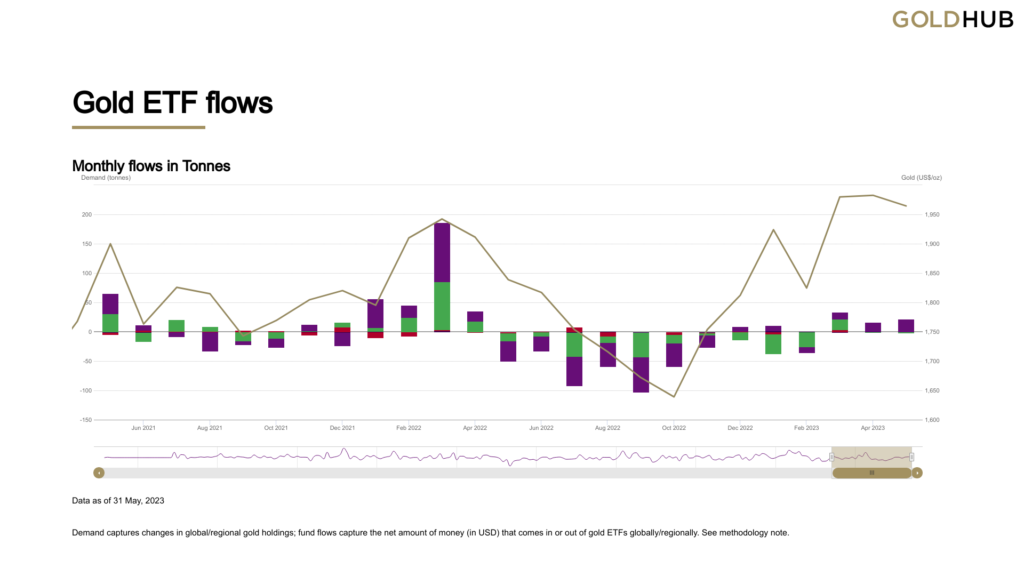
Global physically backed gold ETFs recorded a third consecutive month of positive flows after adding 19 tonnes in May, taking collective holdings to 3,478 tonnes by month-end, the World Gold Council said in its latest report on Wednesday.
However, total assets under management fell slightly by 0.4% to $220 billion due to a lower gold price in the month compared to April. Nonetheless, May’s movement took year-to-date gold ETF flows into positive territory at $1 billion, which is equivalent to a 6-tonne increase in holdings.

Strong price momentum earlier in the month incited investors’ interests in gold ETFs before giving some back towards the end of May as the gold price pulled back, the Council said. In addition, US debt ceiling negotiations and looming banking industry concerns may have also led investors to seek safe-haven assets, contributing to the positive trend in May.
Almost all regions saw positive tonnage demand in May, except for Europe, WGC data shows. But fund flows in Europe remained above zero due mainly to the mechanics of the region’s FX-hedge products.
North American gold ETFs have now experienced net inflows for three straight months, adding $1.4 billion in May. In addition to the aforementioned drivers, a notable price rebound before the expiry date of major gold ETF options might have also contributed, as sizable inflows occurred that day.
Between January and May, funds in North America accumulated net inflows of $3.2 billion (+47t), dominating global inflows.
European funds ended May with positive fund flows (+$228m), but a reduction in gold holdings (-2t). This difference was mostly due to the mechanics of FX-hedged products in Switzerland and Germany, especially amid currency fluctuations related to US debt ceiling uncertainty, the WGC said. Positive fund flows during the month were concentrated in the UK and France.
But stubbornly high inflationary pressure was a stark reminder to investors that central banks in the region are not yet done with hiking. According to WGC, the latter has been a vital factor supressing gold ETF demand in Europe so far in 2023. Year-to-date European funds have led global outflows, losing $2.4 billion, with UK and Germany funds suffering the most.
Asia saw mild net inflows last month (+$9m, +0.1t). Outflows from Chinese funds were offset by Japanese and Indian inflows. Year-to-date Asian fund flows remained slightly negative at $27 million, chiefly due to China, the Council said.
Demand for funds listed in the other regions remained positive (+$25m, +0.04t). Turkey, Australia and South Africa all contributed to the positive flow. Year-to-date, there have been sizable inflows into Turkish funds, driven by local political and economic uncertainty, pushing the other regions’ flows positive to $197 million.
The WGC report also showed that daily trading volumes in the global gold market rose by 3% to $175 billion in May, despite a mild decline in the gold price. This was mainly driven by a 26% monthly surge in trading volumes of exchange-traded derivatives. Meanwhile, trading activities in the OTC physical gold market and in gold ETFs fell by 9% and 11%, respectively.
COMEX gold futures total net longs stood at 537 tonnes at the end of May, representing an 18% fall on April. The weaker gold price performance has led to tactical and shorter-term investors adjusting their futures positioning, contradicting trends in the physically-backed gold ETF market, which often represents investors’ strategic moves, the WGC wrote. Even so, they remain 2% above the 2022 average of 527 tonnes.